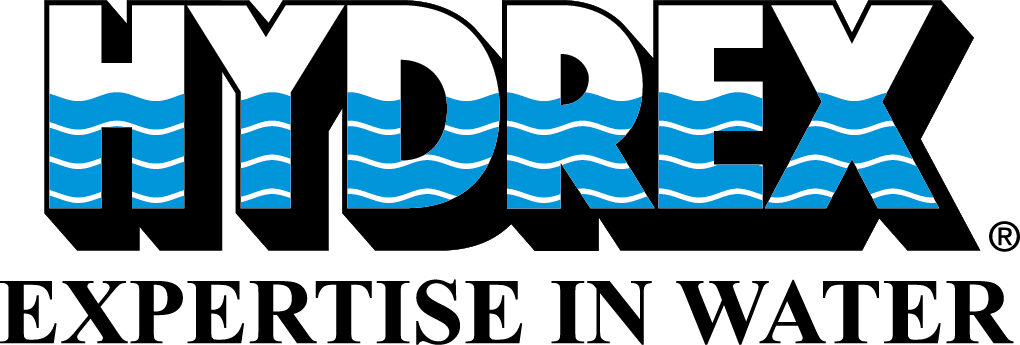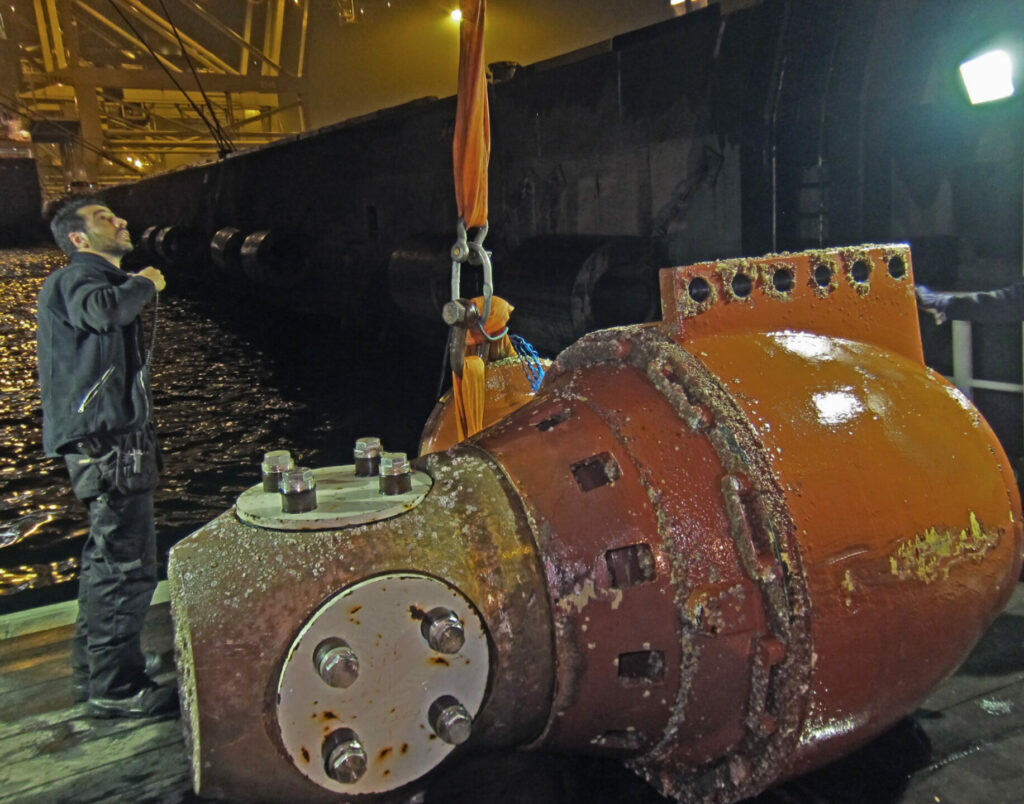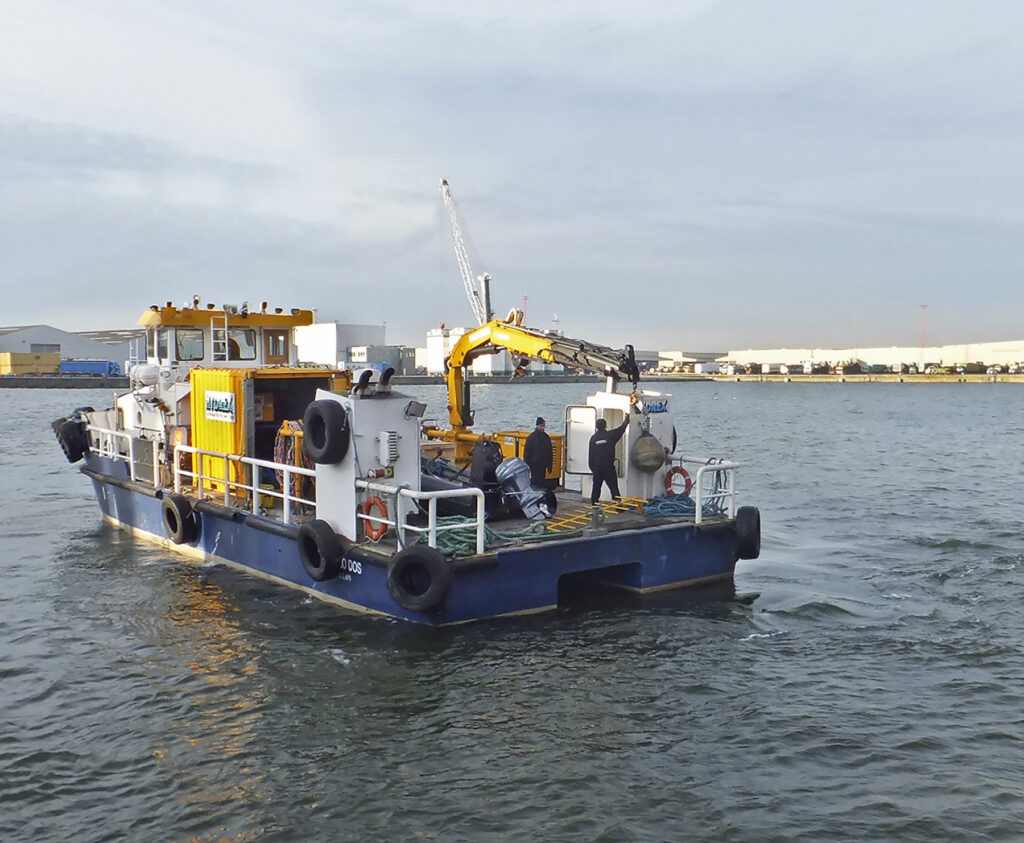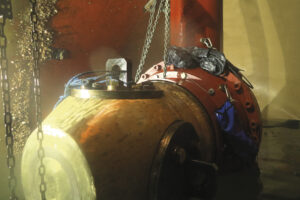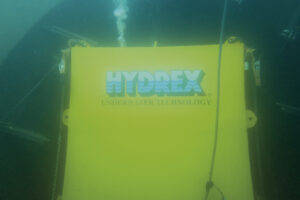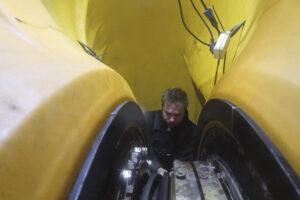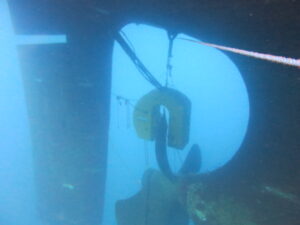Two and a half months after our diver/technicians removed the bow thruster of a 363-meter container vessel in Rotterdam, a team once again mobilized to reinstall the overhauled unit underwater with the use of our flexible mobdock technique. Like the removal, the operation was performed in stages at several locations to allow the vessel to keep to its sailing schedule.
The superintendent of the ship was very happy with the first part of the operation. For this reason, the customer asked us to take care of the reinstallation as well. The job was completed well within the available time frame thanks to good teamwork of the ship staff and our divers.
The available time window was very short for the ship. The time required to reinstall the thruster unit therefore needed to be brought back to the absolute minimum, so the operation was split in parts. The first part of the procedure was carried out during the vessel’s stop in Le Havre.
Installing the bow thruster unit in Le Havre
We have a special R&D department that is continuously looking for new ways to streamline the repair procedures used by our teams. One of the results of their research is a cradle designed especially for thruster operations. This device allowed the divers to lower the bow thruster unit into the water in Le Havre and maneuver it inside the thruster tunnel in one take.
Another technology developed in-house are our mobdocks used to close off a thruster tunnel. Mobdock is short for ‘Mobile mini drydock,’ so called because they enable our diver/technicians to create a dry environment to work in, while the vessel stays afloat. These mobdocks have been used during thruster operations for 20 years now. In the early days, rigid mobdocks were used, but later a lightweight flexible variant was designed and put in use. These can be shipped anywhere in the world by plane very quickly.
After all water was removed from the tunnel, the team secured the unit and connected it to the engine room.
This finished the first part of the operation. The divers returned to the Antwerp headquarters, ready to mobilize again when the vessel was arriving at the Port of Rotterdam.
Phase two of the operation carried out in Rotterdam
Deployment to Rotterdam was done using one of the Hydrex workboats loaded with all the needed equipment. These catamarans are fully equipped as dive support stations that can be used for a wide range of operations. They increase flexibility, which is essential during operations like these where speed is of the utmost importance.
In Rotterdam the team once again used the lightweight mobdocks to close off the thruster tunnel on both sides. Once this was done they installed the thruster propeller blades one by one. With the thruster blades in position, the ship left Rotterdam on schedule.
Conclusion
We can assist shipowners with almost any problem they encounter with their vessel’s thruster. A wide range of underwater repair or maintenance work can be carried out to all types of thrusters. An entire unit can be overhauled, propeller blades or seals can be replaced or repair work on a specific part of a thruster can be performed by our diver/technicians on site.
Team members are trained to be flexible and adapt to rapidly changing circumstances. They worked in shifts around the clock and finished the job well within the available time frame. By performing the operation in steps on-site and underwater, Hydrex made it possible for the owner to stick to his schedule.
If you have any questions regarding bow thruster or other repairs, do not hesitate to contact us. We are at your disposal 24/7 and ready to mobilize almost immediately.
+32 3 213 53 00
hydrex@hydrex.be
